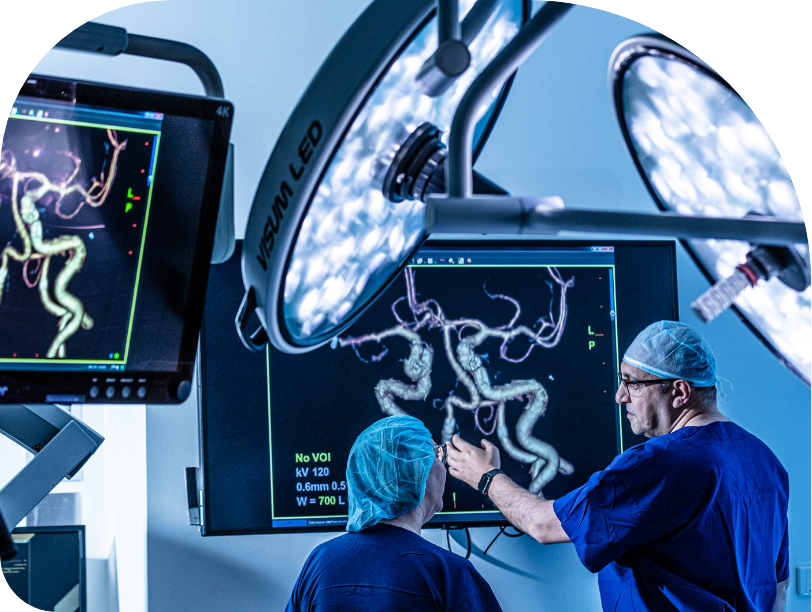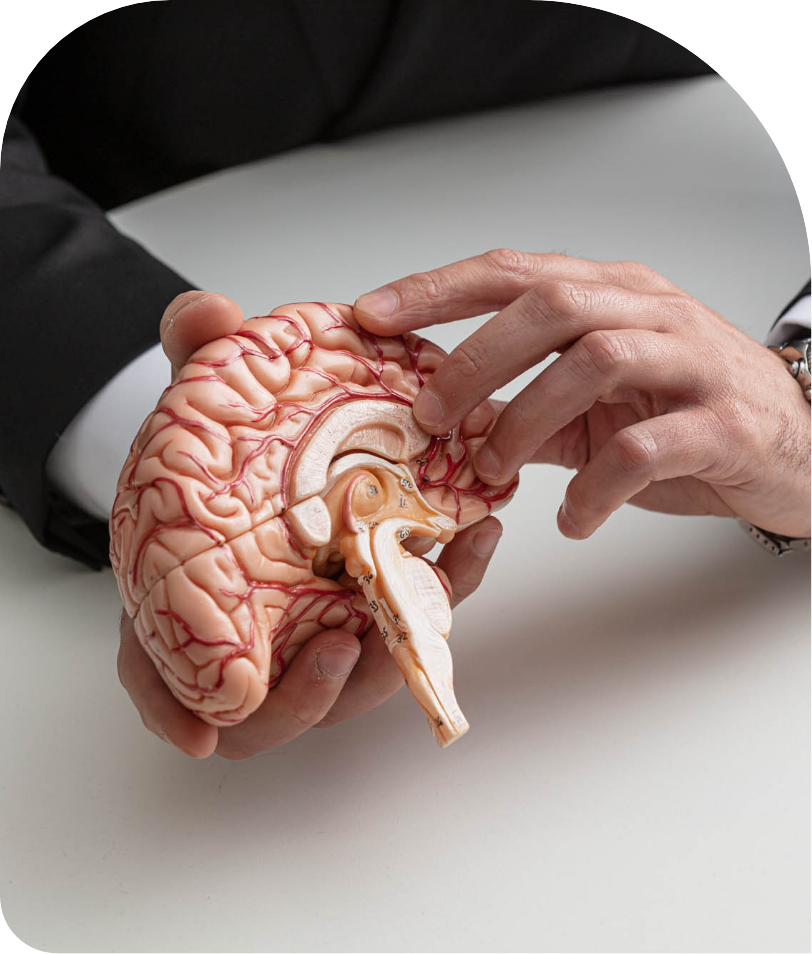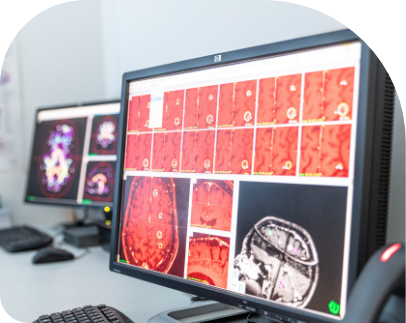Intracranial Aneurysms

What is an intracranial aneurysm?
An intracranial aneurysm (or “brain aneurysm”) is a weakness in the wall of the brain’s blood vessels (artery). The weakened part of the blood vessel wall becomes stretched, like an inflated balloon, and is at risk of bursting.
Why is a brain aneurysm dangerous?
Many brain aneurysms never rupture or cause any health problems. However, a burst brain aneurysm is a potentially fatal emergency. For those who survive, recovery may be slow, and there could be permanent brain damage.
When a brain aneurysm ruptures, it causes a “bleed on the brain.” In most cases, a burst aneurysm causes bleeding in between the brain and the thin membrane that surrounds it. This is called a subarachnoid haemorrhage.
When blood enters the space between the brain and the subarachnoid membrane, it mixes with the fluid that cushions the brain. This increases the pressure on the brain, which can cause many complications.
What are the symptoms of a brain aneurysm?
A ruptured brain aneurysm typically causes a sudden, severe headache. With its abrupt onset, it has often been
described as a “thunderclap” headache and is usually labelled “the worst headache ever.”

Other symptoms of a ruptured aneurysm include:
- Nausea and vomiting
- Stiffness
- Blurred or double vision
- Sensitivity to light
- A drooping eyelid
- Seizures
- Confusion
- Loss of consciousness
Sometimes a brain aneurysm starts to leak slowly before a more severe rupture occurs. In this case, a severe headache or double vision might be the only initial symptom.
An unruptured brain aneurysm doesn’t usually cause symptoms and may be detected during medical tests for other conditions. Occasionally, an unruptured aneurysm could cause the following symptoms:
- Headache or eye pain
- Dizziness
- Blurred or double vision
- Unequal pupils

Who is likely to get a brain aneurysm?
Brain aneurysms are more common in women than in men and are more likely to form as you grow older. It is generally a disease of adults and is very rare in children. It is believed that up to 2% of the population live with an aneurysm.
Other risk factors for brain aneurysm include:
- Cigarette smoking
- Heavy alcohol use
- Recreational drug use (especially cocaine)
- High blood pressure
- Family history of brain aneurysm
- Congenital connective tissue or blood vessel diseases

How is a brain aneurysm treated?
If an unruptured brain aneurysm is detected, Macquarie Neurosurgery & Spine will provide advice based on the patient’s individual risk. In some cases, close monitoring and the adjustment of risk factors may be all that is required. In other cases, treatment is recommended to prevent future rupture of the aneurysm.
A brain aneurysm can be treated with microsurgery. During this surgical procedure, the specialist uses tiny instruments and a powerful operating microscope to close off an aneurysm with a metal clip.
Endovascular treatment is another, less invasive treatment option. During an endovascular procedure, the specialist is able to access the brain aneurysm through a blood vessel (usually in the groin or wrist). Via this blood vessel, the specialist is able to thread a tiny wire up the neck and into the aneurysm. The wire then coils up and seals off the aneurysm.
Specialists at Macquarie Neurosurgery & Spine are highly experienced in these procedures and always discuss the best treatment option with each patient
in detail.

What about the treatment of a burst aneurysm?
Patients with ruptured brain aneurysms require highly skilled care to treat the aneurysm and prevent further complications. A patient with a ruptured brain aneurysm will require surgery or endovascular treatment, as well as medical treatment and close monitoring in the Neurosurgical ICU unit.
If there has been brain damage, a long rehabilitation process follows the initial management phase. Macquarie Neurosurgery & Spine uses an integrated team approach and meticulous protocols to ensure the best possible outcomes for these seriously ill patients.

